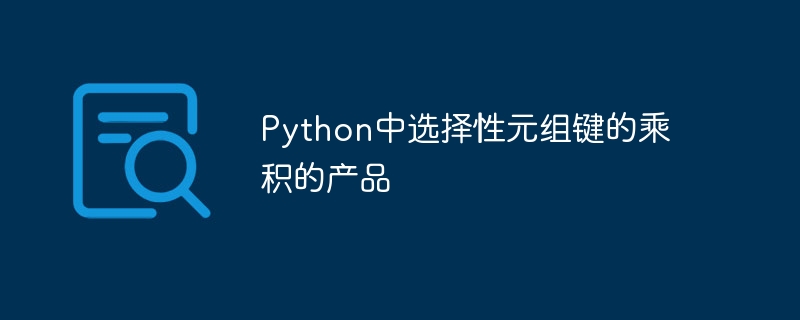

There are different types of data structures in Python. A tuple is a data structure, which is an ordered collection of elements. Tuples are also said to be immutable. Immutable basically means that once created, a tuple cannot be modified. In the following article, we will learn about the program to find the product of selected tuple keys in Python. This procedure is useful in problems that require multiplication of specific elements in a tuple.
Tuple is initialized in a similar way we intialize the list in python. Tuple stores a sequence of elements. Each element of the tuple is defined by its own index number, it basically starts from 0. Index can be helpful for us to find the specific element.
In Python, the initialization of tuples is as follows:
my_tuple = (2, 4, 6, 8, 10)
Above writtin syntax defines how to write tuple in python language. index 0 contain the elmement 2, similarly element at the index 1 is 4, element at the index 2 is 6, and so on. In the problem, we have to calculate the product of selective tuple keys. It means we can select specific elements from the tuples based on their indices. Multiplication operations can also be performed on these selected tuple keys.
new_tuple = (3,4,5,6,7,10)
Index 0 contains element 3, index 1 is 4, and so on, with all elements in order. Each element can be accessed using the following syntax
new_tuple[3] = 6
One way to calculate the product of selective tuple keys is by iterating over the desired indices and multiplying the corresponding elements. Below is an explanation of the code:
The Chinese translation ofdef product_of_keys(tuple_data, keys):
product = 1
for key in keys:
product *= tuple_data[key]
return product
my_tuple = (2, 4, 6, 8, 10)
selected_keys = [0, 2, 4]
result = product_of_keys(my_tuple, selected_keys)
print(result)
120
Function “product_of_keys” will take two arguments “tuple_data”, and “keys”. first argument Contains the values inside the tuple. In the next line of code we have set the “product value to be 1”. This means there will not be any effect on the final result because multiplication of any number to result the number give the number itself.
Written a for loop using the variable "key" to increment the value
"product *= tuple_data[key]" This statement is the main syntax for our problem calculation.
This loop will iterate five times because the tuple contains five elements. In each iteration, the elements of the tuple can be assigned values by their index numbers.
tuple_data[0]=2
tuple_data[1]=4
tuple_data[2]=6
tuple_data[3]=8
tuple_data[4]=10
The selected keys are 0, 2, and 4, and the corresponding elements are 2, 6, and 10 respectively. We pass the tuple and index to the function "product_of_keys" and print the result.
In this article, we explored the concept of calculating the product of selective tuple keys in Python. Tuples are valuable data structures that allow you to group related data together. By understanding how to perform multiplication operations on specific elements within a tuple, you can accomplish various tasks efficiently.
Solving this problem involves using a for loop to iterate over the desired indices and multiply the corresponding elements. This method is easy to understand. Suitable for beginners.
In summary, tuples in Python provide a better way to protect data because modifications are not allowed. By using selective tuple keys, we can perform various operations, including calculating the product of specific elements. The examples and methods discussed in this article should help us accomplish this task efficiently in Python programs.
The above is the detailed content of Product of products of selective tuple keys in Python. For more information, please follow other related articles on the PHP Chinese website!




